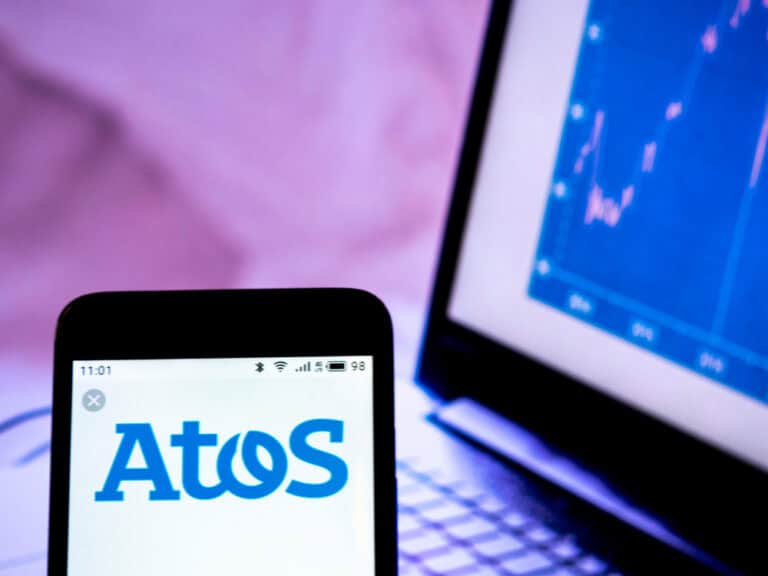During a period of intense transformation and financial restructuring, Atos faces critical challenges that will define the company’s future trajectory. While global news reports coverage predominantly features crisis reports concerning financial difficulties and French government intervention, a more nuanced scenario is emerging in the Benelux region. We discuss the turbulent past year and the organization’s future prospects during an exclusive interview conducted at the ‘Take IT to the Next Level’ event in Brussels in November.
The unfavorable reports regarding Atos’s operational challenges do not appear to have an impact globally. The Benelux operations demonstrate remarkable resilience, for example. With more than 650 employees and over 2,500 professionals serving clients in the region, the local branch continues to maintain stable performance. “If I am being more specific, we have not lost any customers,” emphasizes Punit Sehgal, responsible for Atos and Eviden’s Benelux & Nordics operations. “In the Benelux region, 98% of our customers renew their contracts, and 70% of our 60 principal clients have maintained relationships with us for more than a decade,” he explains in more detail.
These figures are all the more remarkable given the broader context in which Atos operates. Notably, customer satisfaction in Belgium has increased by five percent in 2024, suggesting that regional services remain largely insulated from group-level challenges.
French government intervention and its consequences
Atos’s financial situation dominated discussions throughout 2024, generating extensive speculation about the company’s future. A major turning point came with the intervention of the French government, which acquired a stake in strategic parts of the company. The French government cited national security and privacy concerns, as Atos serves as a crucial partner for national digital security and provides technology utilized by the French military.
For an extended period, Atos’s strategy for securing the company’s future centered on attracting external acquisition interest. It is essential to note that these potential acquisitions excluded the “strategically significant” divisions now under French government control. “The French government wants to maintain control over the direction,” explains Clay Van Doren, Group Chief Growth Officer at Atos. “They want to prevent critical technology and privacy-sensitive systems from being transferred to inappropriate ownership.”
Financial stabilization
Despite interest from multiple entities regarding a potential acquisition of Atos, prospective buyers repeatedly withdrew their offers, even in instances where bids had received the IT company’s approval. Subsequently, the company made the decision to effectively terminate discussions regarding potential acquisition. Atos concluded the turbulent year on a positive note by completing a financial restructuring process. This development creates operational flexibility that enables the company to implement its “medium-term strategy.”
While the newly established financial room provides relief, it does not eliminate the increased scrutiny over the company’s operations. Namely due to the interference of the French government, a new dynamic that calls for greater accountability and control. This represents just one challenge among many, as the company must simultaneously satisfy shareholders and retain talent. Though these objectives present significant challenges, Van Doren emphasizes that innovation and strategic partnerships remain fundamental components of the corporate strategy.
Ambitious growth plans
Despite the turbulence, Atos remains ambitious in its growth objectives. The company aims to double revenue with partners in the ecosystem by 2027. In the Benelux, this partner strategy is nothing new: The company has maintained longstanding collaborations with technology vendors to jointly serve client needs.
The strategic focus primarily encompasses five core domains:
- Artificial Intelligence and data analytics
- Digital workplace solutions
- Network infrastructure
- Cloud services
- Cybersecurity
Especially in the area of AI, the company sees significant growth opportunities on a global level. Given that AI dominates the technology landscape, we don’t think that’s a remarkable statement. “Our AI and data business has tripled in the last three years,” Van Doren notes. Again, there is some caution here in adopting that statement, keeping in mind the state of the AI world three years ago.
More substantive insights emerge from the company’s concrete implementation approach, which prioritizes business outcomes rather than technological capabilities alone. “We always look at the practical applications and the impact on employees,” Sehgal explains. “It’s not about automation for automation’s sake, but about creating real added value for our customers.”
Benelux offers stability
Sehgal said that the Benelux operations excel in terms of end-to-end IT services. “We are one of the largest cybersecurity providers in Belgium, both in the public and private sectors,” Sehgal stated. “Our approach is increasingly shifting to the business-side of our customers, looking at concrete business outcomes rather than pure technology implementations.”
This pragmatic methodology appears to yield positive results. The hybrid cloud business demonstrates steady growth, while cybersecurity services remain a stable cornerstone of Atos’s regional operations.
Stable leadership?
Regarding future strategic direction, Sehgal and Van Doren were unable to provide extensive details during the interview, which was conducted before the new CEO, Philippe Salle, took office in February 2025. In any case, they did not expect a major strategy change. It bears noting that this represents yet another leadership transition. The executive position exhibits a remarkable pattern: over approximately three years, the company has experienced seven CEO departures. Enhanced stability in this leadership role would undoubtedly contribute to the organizational stability the company endeavors to establish globally.
Sehgal sees no problem with continuing the current strategy, given the demonstrated resilience. “There is certainly no need for a new strategy locally. That proves our position in the local cybersecurity landscape all the more.”
Strong local performance
The contrast between Atos’ global challenges and its strong performance in the Benelux is pronounced. While the company encounters difficulties at the group level, the local organization shows resilience and stability. The emphasis on tangible results, customer satisfaction, and pragmatic innovation appears to yield positive outcomes in the Benelux region.
The forthcoming months will prove decisive for Atos’s continued development. With new executive leadership and ongoing transformation initiatives, the organization faces critical decisions. For the Benelux operations, the primary challenge appears to involve maintaining the current strategic trajectory.
